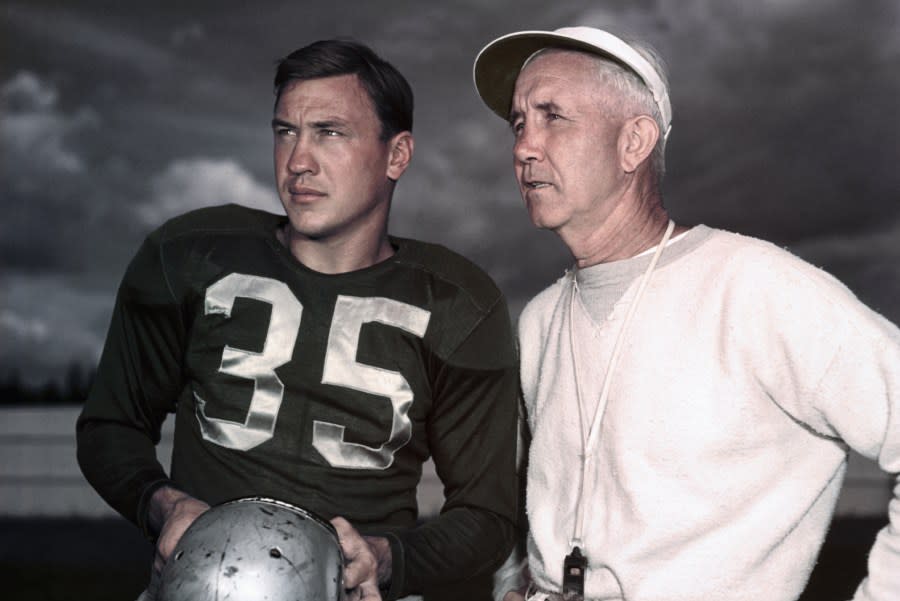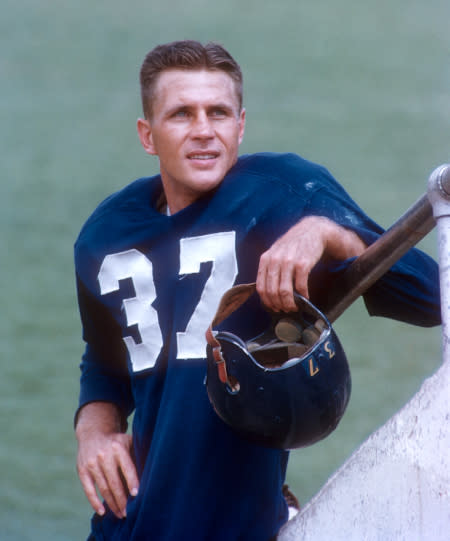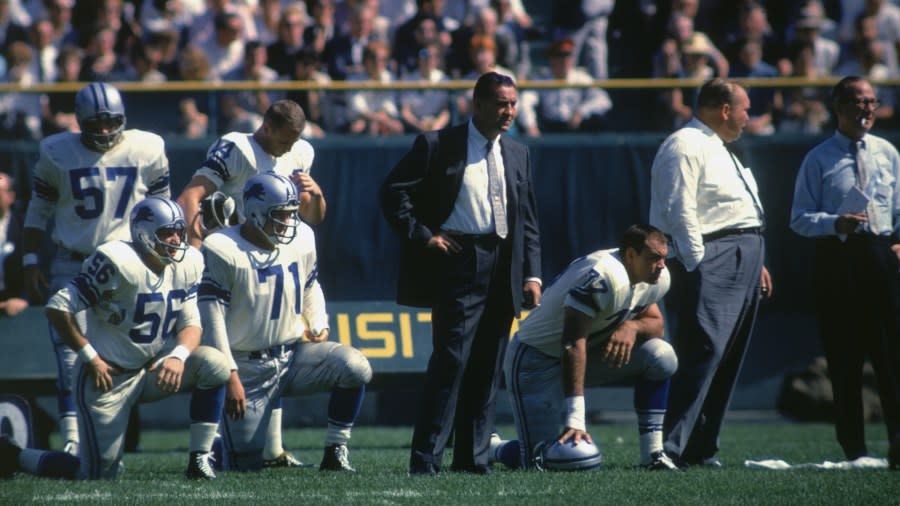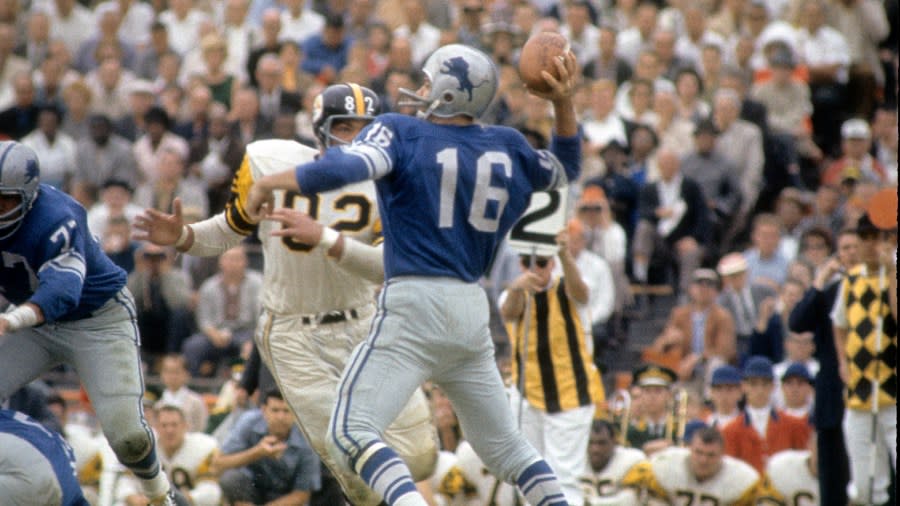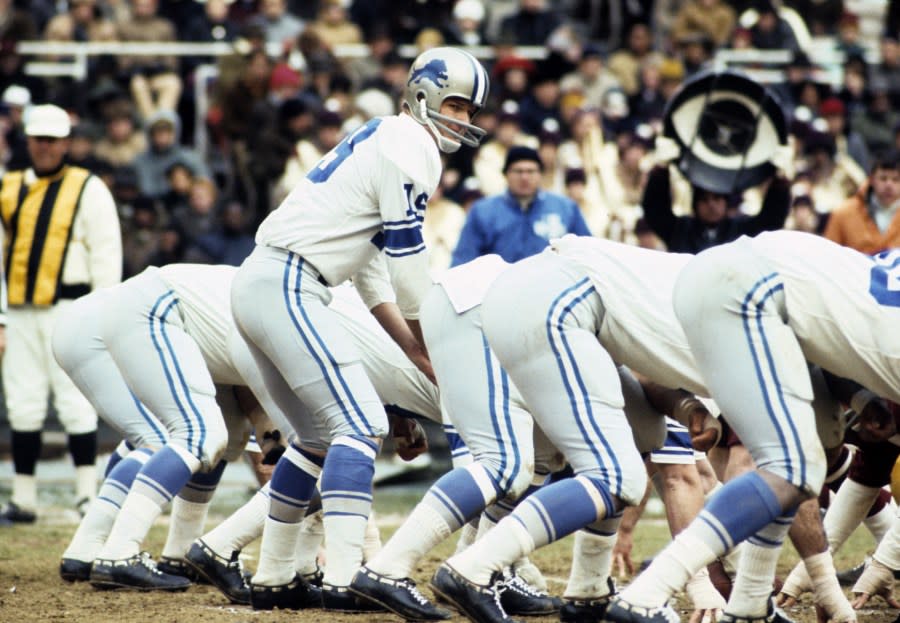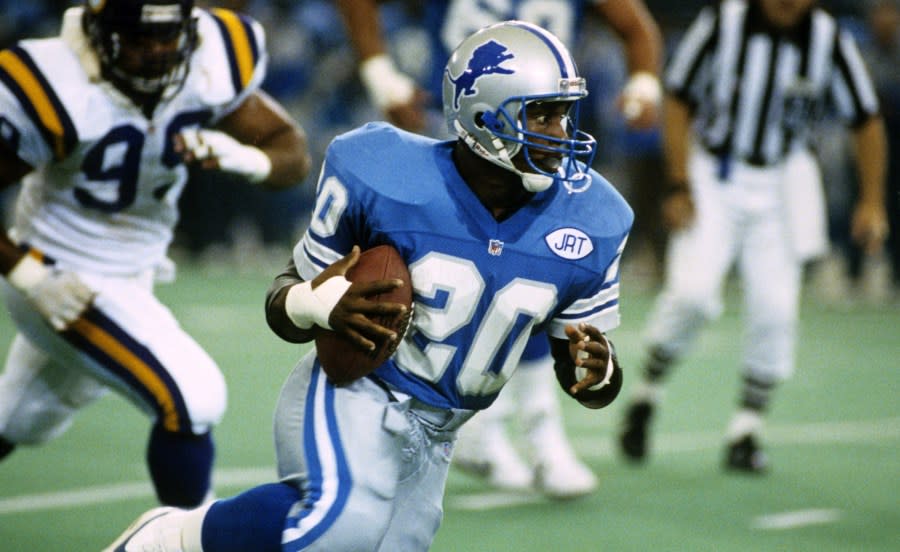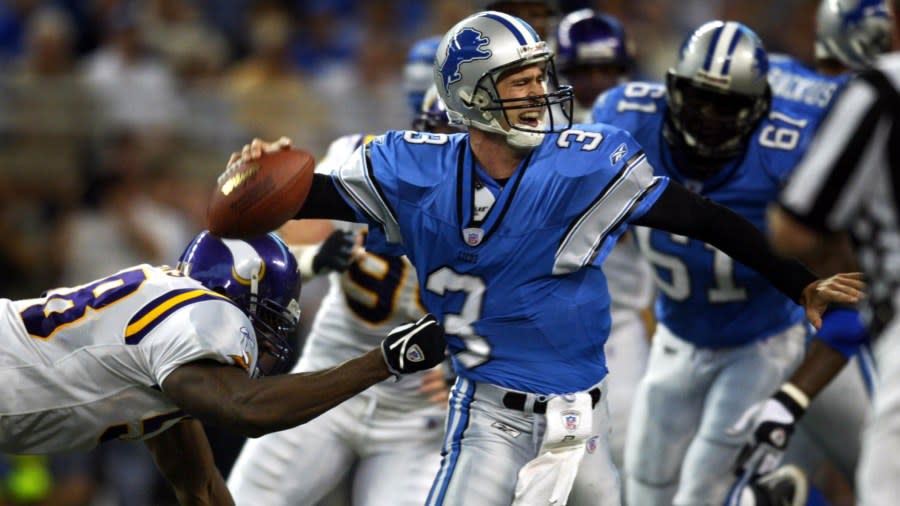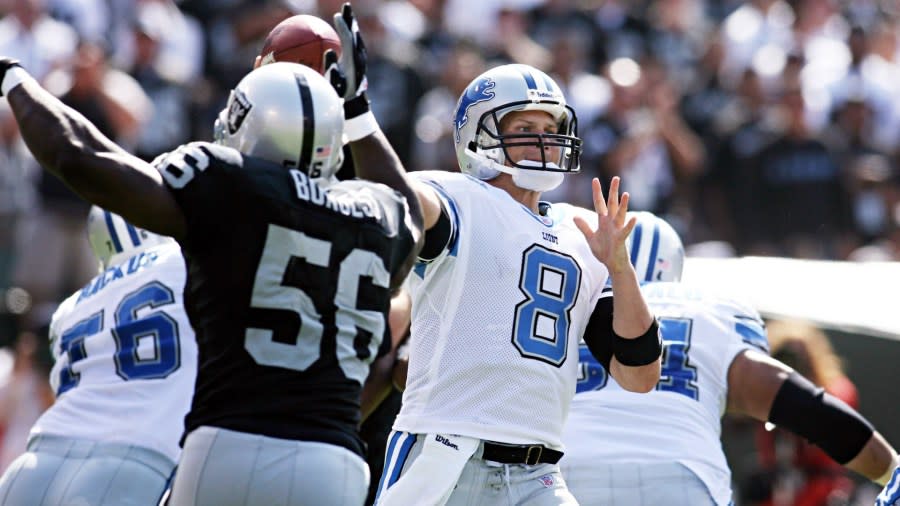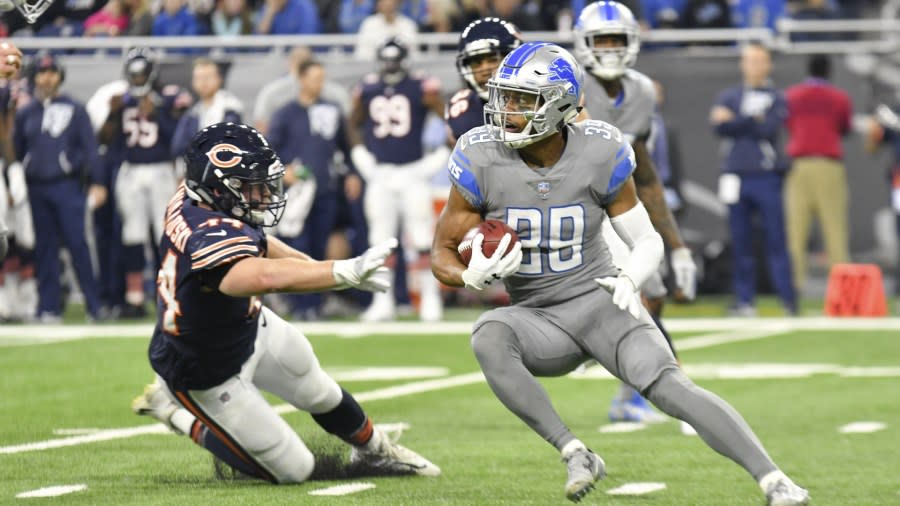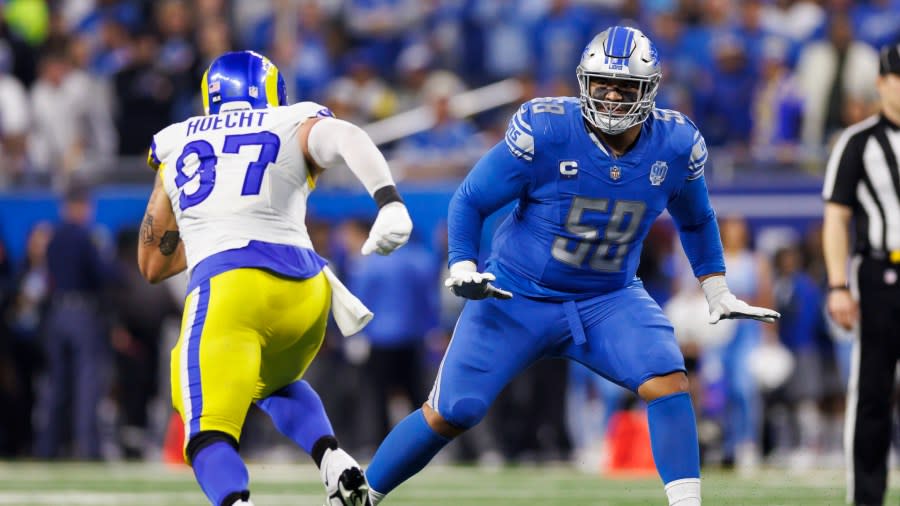Forward down the field! The history of Honolulu Blue
- Oops!Something went wrong.Please try again later.
- Oops!Something went wrong.Please try again later.
GRAND RAPIDS, Mich. (WOOD) — Alright, Lions fans. Let’s face facts. Our team has had a rough go for the past few years (decades), but Detroit is riding high right now behind Jared Goff, Dan Campbell and a new era of up-and-coming stars.
Once again, it is fun to throw on the Honolulu Blue and cheer for the Lions. And while the team’s history may be defined by mediocrity, the Honolulu Blue and silver has always been an NFL staple.
But how did the franchise land on the now-iconic color? How did Honolulu Blue get its name? And did you know there was a time when the team ditched its colors for a different color scheme?
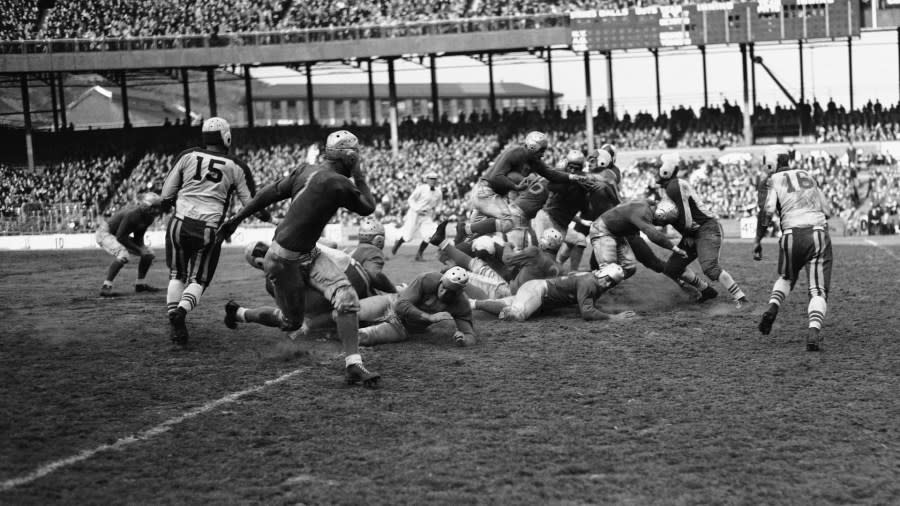
HONOLULU BLUE
The story of Honolulu Blue starts with the origins of the franchise. The team was first launched in Portsmouth, Ohio, in 1930, making it the fifth-oldest franchise in the modern-day NFL. In 1934, radio executive George A. Richards bought the team for $8,000 and moved the franchise to Detroit.
Sportsbooks expect Lions to beat the Bucs Sunday
A new city meant a new start. Richards chose the Lions to as a nod to the city’s other top club, another member of the big cat family, the Detroit Tigers. He also decided to go with a new color scheme to help them separate themselves from the purple and gold of the Portsmouth Spartans.
According to a 2002 interview with Glenn Presnell, the last living member of that inaugural 1934 Lions team, the star tailback and his wife helped picked out the colors. Presnell, who played three seasons with the Spartans before the team was bought and moved, was asked for his opinion when Richards had them over for dinner.
“Mr. Richards, the owner, the day I was up there and signed my contract, he said, ‘There’s a table out there in that next office covered with uniforms. Why don’t you pick out the colors you like,’” Presnell told the Associated Press. “I went out, my wife was with me, we saw this Honolulu Blue and silver and we fell in love with it.”
According to a 1993 book detailing the team’s history, former vice president and general manager Cy Huston worked through dozens of different shades of what would become Honolulu Blue, ultimately landing on the one that they felt went best with silver.
“They had me looking at so many blues, I’m blue in the face,” Huston reportedly said.
Playoff run has Lions merch flying off the shelves
It was Richards that gave Honolulu Blue its now-famous moniker. According to Bill Dow with Vintage Detroit, after Richard and his team settled on the color, he referred to it as Honolulu Blue because it reminded him of the water where he vacationed in Hawaii.
The Lions debuted the Honolulu Blue and silver in that inaugural season and wore that basic uniform for more than a decade before a new influence decided to make a change.
A DIFFERENT ERA
Following the 1947 season, the Lions underwent some major changes. Coach Gus Dorais’ contract was bought out, but the payoff was so expensive that team owner Fred Mandel decided to sell the team to recoup his losses.
So entering the 1948 season, the team had new owners and a new coach. A group of local businessmen got together to purchase the team, including Edwin Anderson, the owner of Goebel’s Brewery. Looking for a coach to resurrect the team, the new owners hired Bo McMillin from the University of Indiana.
The one-time college star and longtime college coach decided the team needed more than new blood: It needed a makeover, too. So he pushed for the team to abandon silver and blue for the red and black that McMillin’s Hoosiers wore.
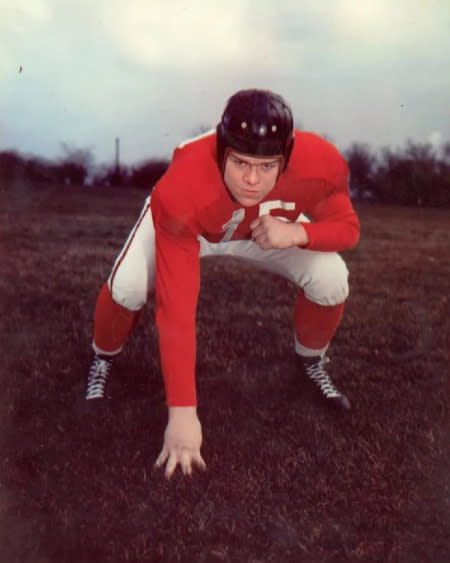
“The new Lions’ jersey was scarlet with white numbers matched with white pants highlighted by a thin black stripe between two thin scarlet stripes down the side of the leg,” Dow wrote in 2019.
McMillin also unveiled an all-black uniform that he reserved for “big games.” According to Dow, McMillin’s Hoosiers were 6-0 in the all-blacks and the superstitious coach hoped that luck would follow him to Detroit. It didn’t. The Lions lost their first game in the all-blacks 56-20 to the Chicago Cardinals en route to a 2-10 season.
The Lions may have had new uniforms but there was no change in the standings, and fans weren’t happy. The following year, McMillin caved in to some of the outside pressure, bringing back the Honolulu Blue and silver for home games. By 1950, the scarlet and black was gone completely. And by 1951, McMillin was gone, too, fired with an overall record of 12-24.
By 1952, the Lions had built a winner around quarterback Bobby Layne and were back in Honolulu Blue when they stood atop the league with back-to-back titles.
Bill Dudley poses alongside coach Bo McMillin sporting the Lions all-black uniforms that they wore for special games in 1948 and 1949. (Getty Images file) Hall of Famer Doak Walker poses in his Honolulu Blue jersey in 1955. (Getty Images file) Coach George Wilson and the Lions look on from the bench during a 1961 game. (Getty Images file) The 1962 uniforms, worn here by quarterback Milt Plum, show how the shade of Honolulu Blue gradually got lighter from the 1950s through the 1990s. (Getty Images file) Lions quarterback Bill Munson calls signals at the line of scrimmage during a 1968 game against Washington. Compared to more recent uniforms, the Lions silver is lighter and the jerseys have less detail. The leaping lion on the helmet is also larger. (Getty Images file) A 1991 file photo of Barry Sanders shows the home uniform with a lighter shade of Honolulu Blue and big white numbers and a silver border. The silver pants have a blue and white stripe that matches the Lions’ helmets. (Getty Images file) This 2003 file photo shows off the Lions’ uniforms of the era. A darker shade of Honolulu Blue with several accents on the jersey and pants. The leaping lion logo will also eventually get a touchup. (Getty Images file) In this 2007 file photo, quarterback Jon Kitna shows off the Lions road uniform, which is white with silver pants. His number is Honolulu Blue with a silver and black border. (Getty Images file) Former Lions punt returner Jamal Agnew shows off the team’s steel-gray Color Rush uniforms in a game against the Chicago Bears on Dec. 16, 2017. (Getty Images) Penei Sewell wears Honolulu Blue head to toe in the Lions’ 24-23 win over the Los Angeles Rams on Jan. 14, 2024. (Getty Images)
THE EVER-CHANGING UNIFORMS
Honolulu Blue was back, but that doesn’t mean the jerseys and team logo have stayed stagnant. Practically every year, it seems there is some small tweak or change to the Lions’ style.
In 1961, after the NFL signed its first contract with CBS to televise games, the league forced teams to add a logo to their helmets so viewers could better differentiate between the two teams. The Lions debuted the leaping lion along with two vertical blue stripes running down the middle of the helmet.
Playoff Pride: Spirit of Detroit statue now sporting Honolulu Blue
Over the years, the team added different stripes to the jerseys and pants. Helmet styles were tweaked, too, with the blue stripes ditched for a single white stripe. Eventually, players’ names were added to the back of the jerseys, the leaping lion got an outline, and players’ numbers were added to the back of the helmet.
According to Dow, in 1980 and 1981, the team even wore “glittered numbers” on their uniforms.
“It was like sparkles that kids use in their school artwork,” former equipment manager Dan Jaroshewich told Dow. “The problem was that when our opponents looked at game film, they had trouble reading our numbers with the glare of the sun and light. They complained, so we had to get rid of them.”
The team debuted an alternate black uniform in 2005 — one that some Lions fans loved and others loathed. The Detroit Free Press reported that the Lions had designs to bring back the all-black uniforms as part of the NFL’s “Color Rush” design, but they were ultimately scrapped. Instead, the Lions have the all-gray uniforms that debuted in 2017.
Sign up for the News 8 weekly recap newsletter
Honolulu Blue has changed over the years, too. Compare the pictures of Lem Barney of the 60s and 70s with Barry Sanders in the 90s or Matthew Stafford in the 2010s. What started as more of a royal blue faded closer to a sky blue and back again.
Depending on when you first became a fan, you may have a special preference to one color tone over another. Despite the details on the uniform or the design of the leaping lion, it’s safe to say that the 2023 team has been one of the best in Honolulu Blue that we have seen in many years and one of the most fun to watch.
For the latest news, weather, sports, and streaming video, head to WOODTV.com.
